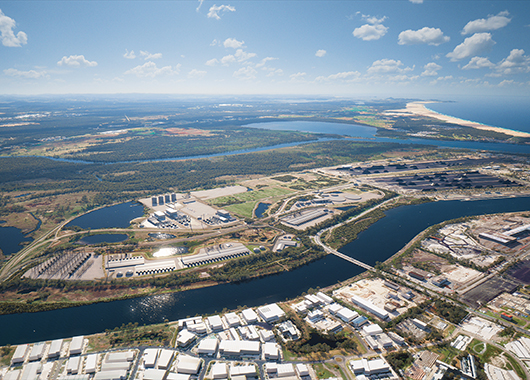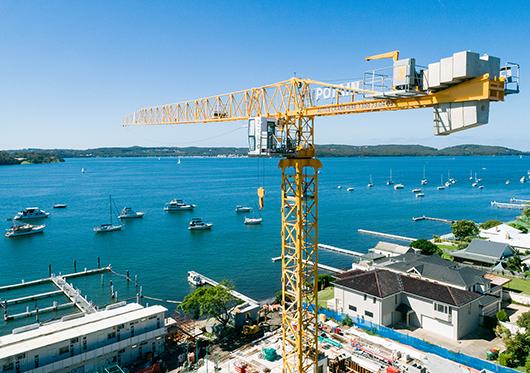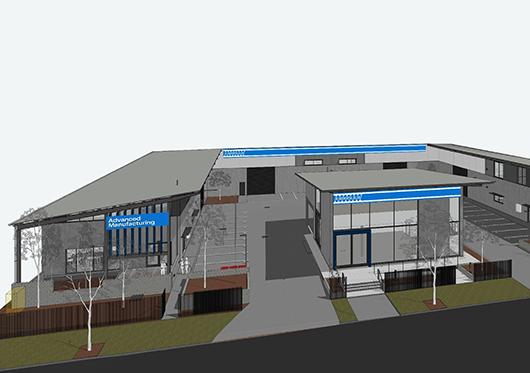Minister for Climate Change and Energy unveils final master plan design for nation’s most advanced Clean Energy Precinct

Minister for Climate Change and Energy, the Hon. Chris Bowen MP, unveiled the final design of Australia's most advanced clean energy production project, signalling the Precinct’s readiness to the global energy market.
On 4 July Minister Bowen was joined at Port of Newcastle's Clean Energy Precinct (CEP) by Deputy Speaker, the Hon. Sharon Claydon MP, and Port of Newcastle CEO Craig Carmody.
Minister for Climate Change and Energy, the Hon. Chris Bowen MP said:
“The Hunter has been an industrial and economic powerhouse for decades, making the Port of Newcastle an ideal location for a Clean Energy Precinct that can support decarbonisation of heavy industry and connect Australia’s renewable resources to the world.
“The Albanese Labor Government is supporting industrial regions like the Hunter to take advantage of the economic and job opportunities that come with reliable renewable energy.”
Port of Newcastle CEO Craig Carmody said today’s milestone was the Precinct’s biggest to date since the $100 million investment by the Commonwealth Government.
“The final design for the Clean Energy Precinct is an important milestone in the project and for the future of clean energy in the Hunter region. This is the design that Port of Newcastle is offering global clean energy production companies and directs the planning approvals the Port will be seeking.”
FEED and EIS studies are underway at the CEP and are due for completion at the end of 2025. Mr Carmody said these studies, along with results from community and Traditional Owner consultation, have informed the design and concept planning approvals. These approvals will allow for expediated construction of the different production facilities, making the CEP Australia’s most mature and attractive clean energy project for investment.
“We are building for the future of our region, city, and port. As the design shows, we can accommodate different forms of clean energy, including ammonia and hydrogen. Port of Newcastle has always said we are agnostic when it comes to the type of clean energy produced at the Port’s Clean Energy Precinct.
“Our job is to ensure that, when coal finally declines, we still have energy from the Hunter and Newcastle to export to the world. This design proves this goal can be achieved.
“We have received strong international interest in occupying these sites, particularly from partners in Germany, Japan and South Korea. This level of global engagement demonstrates the confidence that leading economies have in Port of Newcastle’s vision and Australia’s potential as a clean energy powerhouse.
“Alongside Port of Newcastle’s other strategic diversification projects, the CEP will ensure Port of Newcastle remains a resilient, future-focused gateway for Australia’s trade and energy needs,” Mr Carmody said.
Infrastructure, Transport, Regional Development and Local Government Minister Catherine King said:
“Australia’s largest coal port is diversifying its offering and preparing to accommodate new and growing industries on the shores of the Hunter River.
“Newcastle has always been one of the most productive industrial centres in Australia, and we’re ensuring its legacy continues with the Clean Energy Precinct.
“It’s crucial that we develop the infrastructure now to be prepared for Australia’s energy future, and that’s exactly what we’re doing here on Kooragang Island.”
Deputy Speaker of the House of Representatives and Federal Member for Newcastle, Sharon Claydon, said:
“This is a defining moment for Newcastle – a city that has helped power the nation for generations is preparing to power the future with clean energy.
“It’s hard to imagine a more powerful symbol of our region’s transformation – land once earmarked for a coal terminal will now be at the forefront of the global clean energy transition.
“This masterplan lays the groundwork for thousands of jobs in renewable energy, advanced manufacturing, and clean energy exports.
“From coal to clean energy, this is what a transition looks like. Thoughtful, strategic, and grounded in the strengths of our region and our people.”
Other Articles from this issue
Government backs renewable boost to Hunter Valley
The Albanese Government is securing Australia's energy future with a Hydrogen Headstart investment in Orica's Hunter Val...


Lake Mac development tops $1bn
The total value of development approvals in Lake Macquarie has cracked the billion-dollar mark yet again in Lake Macquar...


Lovells breaks ground on new flagship engineering, manufacturing and retail centre in Newcastle to future-proof 95-year legacy
As part of its 95th anniversary and long-standing commitment to innovation, Lovells Group has announced the launch of a ...


Local ‘legends’ needed to support learning pathways
The region’s leading provider of community based adult learning WEA Hunter is offering a unique business and community p...



